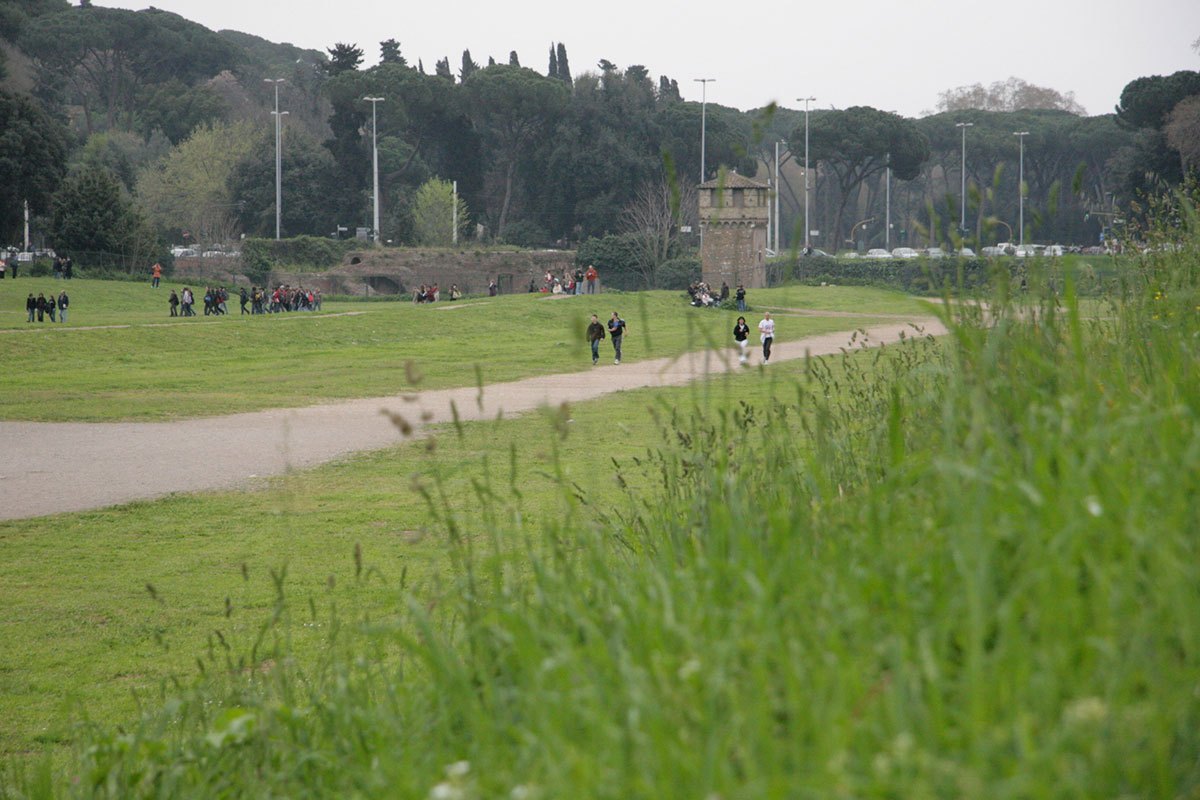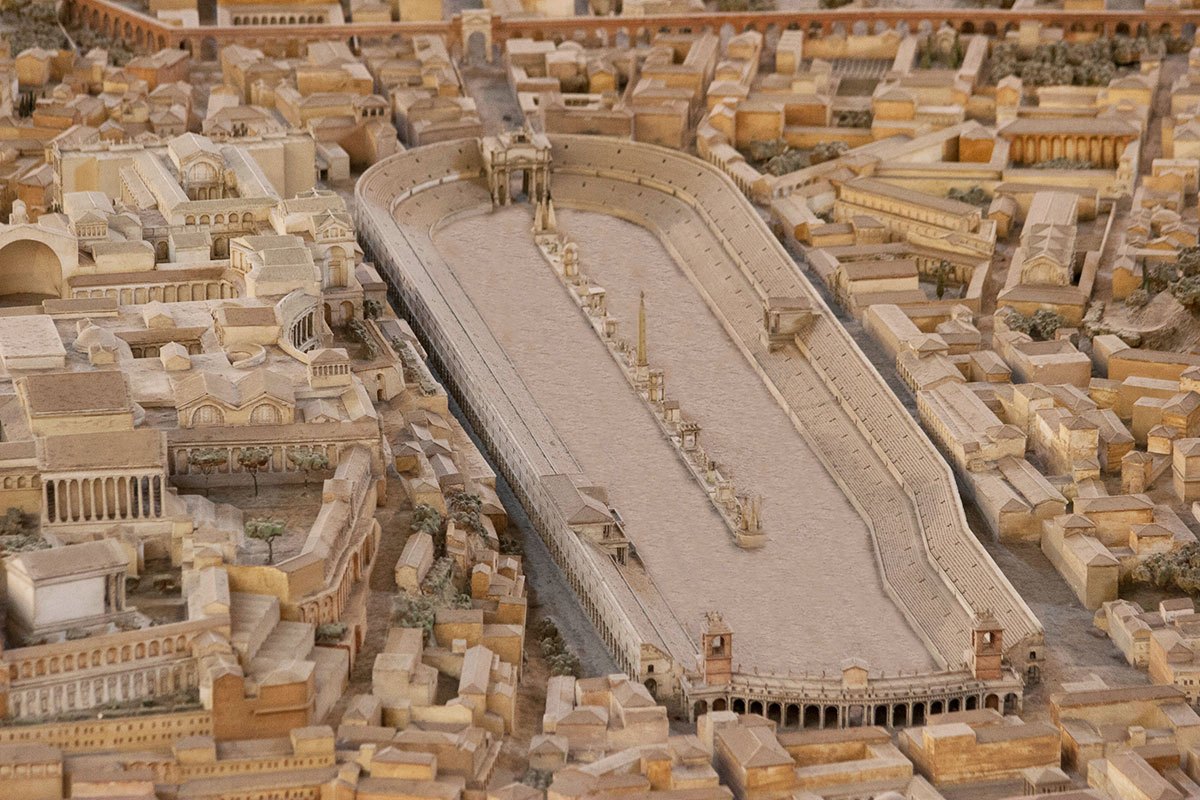Lucius Tarquinius Priscus
Work begun on the Circus Maximus
Below is a passage from Livy talking about Priscus and the creation of Circus Maximus.
The place for the circus, which is now called Maximus, was then first marked out, and spaces were parted off for the senators and knights, where they might each erect seats for themselves: they were called fori (benches). They viewed the games from scaffolding which supported seats twelve feet high from the ground. The show took place; horses and boxers were sent for, chiefly from Etruria. These solemn games afterwards continued annual, being variously called the Roman and Great (games).
Titus Livius. The History of Rome Book I. Translated by D. Spillan. London. HENRY G. BOHN, YORK STREET, COVENT GARDEN. MDCCCLIII. JOHN CHILDS AND SON, BUNGAY. Project Gutenburg. Release Date: November 6, 2006. [EBook #19725]. See page 44.
The Murcia Valley, site of the Circus Maximus, today (below).
Little remains of the circus today, one of the largest structures in the empire, with a seating capacity of 250,000 according to Pliny the Elder. Just to provide a point of reference, the Indianapolis Motor Speedway, the largest sporting venue in the world today, has a permanent seating capacity of 235,000.But the Circus Maximus didn’t always have the gargantuan proportions it acquired in the 2nd century AD during the reign of Trajan. Approximately 750 years earlier, during the time of Lucius Tarquinius Priscus, the Circus was probably little more than a race track with some wooden bleachers Tarquinius had built on a hillside so that aristocratic spectators could be more comfortable viewing races and other events. The seating was assigned, reinforcing the social hierarchy.
Photo by C. Phares for Pro Romanis.
The Circus Maximus (below) as it looked during the Imperial period.
The Palatine hill with its imperial complex is behind the circus. The shot is taken from the direction of the Aventine Hill. During its heyday, the Circus held approximately 250,000 spectators. This photo is of a model by Italo Gismondi built during the rule of Benito Mussolini. It can be seen at the Museum of Roman Civilization in the EUR section of Rome.
Photo by C. Phares for Pro Romanis.


